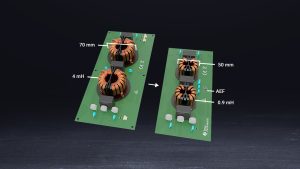What Are the Challenges Faced in Manufacturing Quick Turn PCB Prototypes?
4 min read
In the realm of electronics manufacturing, the demand for quick turn PCB prototypes is ever-increasing due to the rapid pace of technological advancements and market competition. Quick turn PCB prototypes play a crucial role in the product development cycle, allowing companies to swiftly iterate on designs, test functionalities, and bring innovative products to market faster. However, the path to creating these prototypes is not without its challenges. From time constraints and quality control to material availability and communication hurdles, manufacturers face a myriad of obstacles that must be navigated to ensure the successful and timely production of high-quality PCB prototypes. This article delves into the key challenges faced by manufacturers in the realm of quick turn PCB prototyping and explores strategies to overcome them, drawing insights from the expertise of PCB-togo Electronic, Inc.
Introduction to Quick Turn PCB Prototypes
Quick Turn PCB Prototypes are like the adrenaline-fueled sprinters of the PCB world, designed for rapid production to meet urgent project demands. These prototypes provide a vital testing ground for new designs before full-scale production, helping to identify and rectify issues early on.
Time Constraints in Quick Turn Manufacturing
Impact of Tight Deadlines on Prototyping Process
In the realm of quick turn manufacturing, time is the elusive unicorn that can make or break a project. Tight deadlines can add pressure, affecting the thoroughness of the prototyping process and potentially leading to oversights or errors.
Strategies for Improving Turnaround Time
To meet the fast-paced demands of quick turn PCB prototypes, manufacturers employ strategies like streamlined processes, efficient communication channels, and cross-functional collaboration. Embracing automation and leveraging advanced technologies can also help shave off precious time.
Quality Control and Testing Challenges
Ensuring Manufacturing Compliance with Industry Standards
Maintaining quality standards in quick turn manufacturing is like juggling flaming swords – a delicate balance of speed and precision. Manufacturers must adhere to industry regulations and guidelines to ensure the reliability and safety of the prototypes.
Implementing Rigorous Testing Procedures
Thorough testing is the unsung hero of quick turn PCB prototypes. From functional testing to environmental stress testing, manufacturers need to implement a battery of tests to catch any lurking gremlins before the prototypes hit the production line.
Material Availability and Sourcing Issues
Managing Supply Chain Disruptions
Navigating the labyrinth of supply chains can be a rollercoaster ride for manufacturers of quick turn PCB prototypes. Sudden disruptions in material availability can throw a wrench in the works, leading to delays and headaches.
Alternative Sourcing Options for Critical Components
In the face of material shortages or delays, manufacturers must think on their feet and explore alternative sourcing options for critical components. Building robust supplier relationships and having backup plans in place can be the lifesavers in times of material scarcity.
Communication and Collaboration Hurdles
Effective Communication between Design, Engineering, and Production Teams
In the world of quick turn PCB prototyping, clear communication between design, engineering, and production teams is essential. When tight timelines are at play, ensuring everyone is on the same page helps prevent misunderstandings and delays. It’s like making sure everyone knows they’re building a delicious peanut butter sandwich instead of a questionable peanut butter and onion concoction.
Leveraging Collaboration Tools for Seamless Workflow
To overcome communication hurdles, utilizing collaboration tools can be a game-changer. From project management platforms to real-time communication apps, these tools enhance transparency and streamline workflows. Think of them as the secret sauce that keeps everyone working together smoothly, like a perfectly orchestrated kitchen dance during peak dinner rush.
Design Complexity and Iterative Changes
Addressing Complex Design Requirements in Quick Turn Prototyping
Quick turn PCB prototyping often involves navigating complex design requirements at lightning speed. From intricate layouts to specialized components, handling these challenges requires expertise and adaptability. It’s like trying to solve a Rubik’s Cube blindfolded, but instead of colors, you’re dealing with electronic components.
Strategies for Managing Iterative Changes and Revisions
In the fast-paced world of quick turn prototyping, iterative changes are par for the course. Implementing strategies to manage and document these revisions is key to staying on track. It’s akin to editing a rough draft multiple times until it transforms into a polished masterpiece – each change bringing you one step closer to perfection.
Cost Management and Budget Constraints
Balancing Quality and Cost Efficiency in Quick Turn PCB Prototyping
When it comes to quick turn PCB prototyping, balancing quality and cost efficiency is a delicate dance. Finding ways to deliver top-notch results within budget constraints requires smart decision-making and resourcefulness. Think of it as trying to host a fancy dinner party on a shoestring budget – serving caviar taste on a canned tuna budget.
Optimizing Budget Allocation for Materials and Production Processes
Optimizing budget allocation for materials and production processes is crucial in quick turn prototyping. From selecting cost-effective components to streamlining manufacturing processes, every penny counts. It’s like playing a strategic game of chess, where each move is calculated to make the most of limited resources – a delicate balance between frugality and functionality.
In conclusion, navigating the challenges inherent in manufacturing quick turn PCB prototypes requires a strategic approach, effective collaboration, and a commitment to quality and efficiency. By addressing time constraints, enhancing quality control measures, optimizing material sourcing, improving communication channels, managing design complexities, and balancing budget considerations, manufacturers can streamline their prototyping processes and stay ahead in a competitive industry landscape. With a focus on innovation and continual improvement, companies like PCB-togo Electronic, Inc. are at the forefront of overcoming these challenges and delivering cutting-edge PCB prototypes that meet the demands of today’s fast-paced market.




